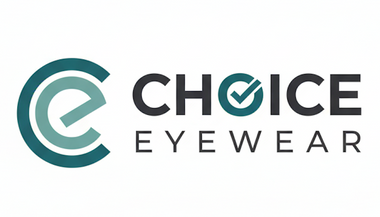(Spoiler: They’re Not Just for Sunglasses Lovers)
As SF-based eyewear experts, one of the top questions we get is: "Are photochromic lenses actually worth it?"
You’ve seen them—the "smart" lenses that magically darken in the sun and go clear indoors. Often known by the brand name Transitions, these lenses adapt to changing light to protect your eyes and reduce strain.
But how do they really work? And are they the right choice for your lifestyle? Let's break it down.
🧪 The (Simple) Science: How They Work
Photochromic lenses are treated with special molecules that react to UV light:
-
Indoors: With no UV exposure, the molecules stay inactive and your lenses remain perfectly clear.
-
Outdoors: The moment UV light hits the lenses, it triggers a chemical reaction that causes the molecules to change shape and darken.
-
Back Indoors: Once the UV light is gone, the lenses gradually return to their clear state.
Modern photochromic technology is faster and looks clearer than ever, but it can still be affected by temperature (they get darker in the cold) and light intensity.
Photochromic vs. Transitions: What's the Difference?
This is a common question! "Transitions®" is simply the most popular brand name of photochromic lenses. It's like asking for a "Kleenex" instead of a tissue. We offer high-quality, unbranded photochromic lenses that work the same way but at a better value.
✅ The Perks: Why Our Customers Love Them
-
One Pair for Everything: This is the ultimate convenience. You get one stylish pair of glasses that serves as both your indoor glasses and your sunglasses.
-
Constant 100% UV Protection: Because the lenses react to UV, your eyes are always protected from 100% of UVA/UVB rays.
-
Less Squinting, More Comfort: They reduce glare and eye strain, meaning you're more comfortable whether you're reading a book or walking in bright sun.
-
A Smart Value: You're essentially getting two pairs of high-quality glasses in one. It's an incredible, cost-effective investment.
⚠️ The Expert's Warning: When They Don't Work
The Big Question: Do Photochromic Lenses Work While Driving?
In short: No, they do not.
This is the #1 limitation to be aware of. Your car's windshield is designed to block the exact UV rays that activate the lenses. Because the UV light can't reach them, your lenses will stay clear. For driving in bright sun, we always recommend a dedicated pair of polarized sunglasses.
We believe in honesty. Photochromic lenses are fantastic, but they have two key limitations you need to know about.
-
They don't work well in cars. Most windshields already block the UV rays that the lenses need to activate. They simply won't get dark while you're driving.
-
They take a minute to adjust. They aren't instant. They take 30-60 seconds to darken and a few minutes to fully return to clear.
-
They aren't as dark as full sunglasses. In very intense, direct sunlight (like a day at the beach), a dedicated pair of polarized sunglasses will offer more darkness.
Our Expert Tip: If your main need is for driving in bright sun, we strongly recommend a separate pair of polarized prescription sunglasses.
👤 Who Should Consider Photochromic Lenses?
These are a Perfect Choice for...
-
People who go in and out of buildings frequently (commuters, students, parents).
-
Kids and teens (this way, you know their eyes are always protected).
-
Anyone with light sensitivity or who finds they're always squinting.
-
The minimalist who wants one high-quality, versatile pair.
...And Who Should Probably Stick to Sunglasses
-
Professional drivers or anyone who spends most of their day in a car.
-
People who need maximum, deep-tint darkness for activities like boating or beach days.
How Much Do Photochromic Lenses Cost?
While photochromic technology is more advanced, it's also more accessible than ever. At Choice Eyewear, every frame comes with free clear single-vision lenses.
You can add our premium photochromic coating as a simple upgrade at checkout—giving you two pairs of glasses in one for a fraction of the price.
💬 Our SF Team’s Pro-Tips
-
Pair them with Anti-Reflective Coating: This is our #1 recommendation. Adding an Anti-Reflective Coating cuts glare from screens indoors and makes your lenses look nearly invisible, giving you the best of both worlds.
-
Give Them a Chance: Your new lenses may take a few full UV-exposure cycles to "settle in." Give them a week before you make your final judgment.
-
Be Patient with Temperature: Remember, they'll react a little slower in cold weather.
The Final Verdict: Are They Your Perfect Pair?
Photochromic lenses offer incredible convenience and non-stop protection. They might not replace your darkest sunglasses, but for the everyday "in-and-out" of modern life, they're a clear winner.
The best part? You can add this smart technology to almost any of our stylish, hand-picked frames.


